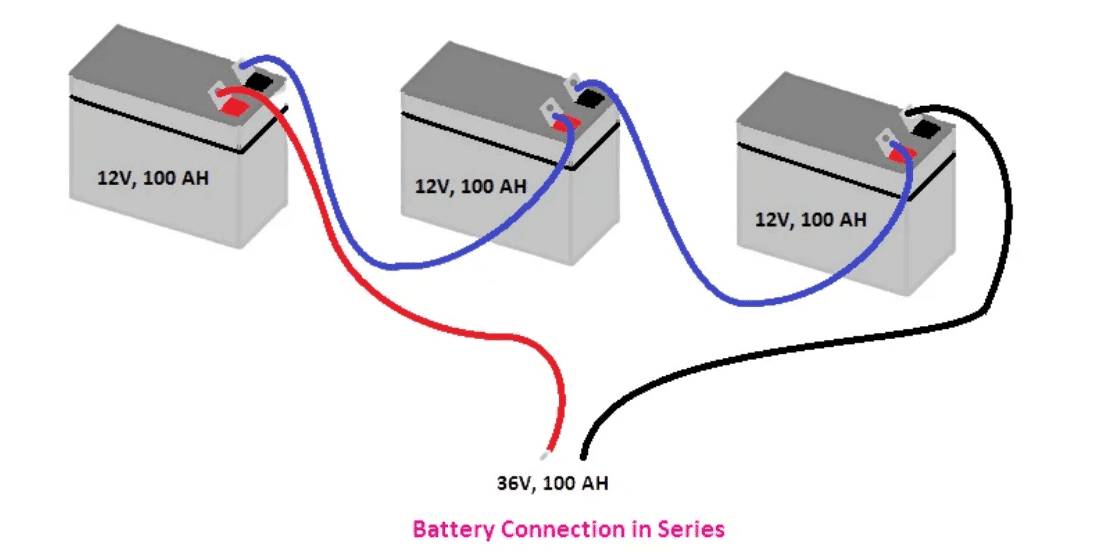Connecting multiple Lithium Iron Phosphate (LiFePO4) batteries in parallel is a common practice among users seeking to increase capacity and enhance performance. However, understanding the implications and best practices for this configuration is crucial for ensuring safety and efficiency. In this article, we will explore the benefits, considerations, and guidelines for connecting two LiFePO4 batteries in parallel.
Understanding LiFePO4 Battery Basics
LiFePO4 batteries are a type of lithium-ion battery known for their stability, safety, and long cycle life. These batteries are widely used in various applications, including renewable energy systems, electric vehicles, and backup power solutions. Each cell typically has a nominal voltage of 3.2 volts, and they are often configured in series or parallel to meet specific voltage and capacity requirements.
Benefits of Connecting LiFePO4 Batteries in Parallel
1. Increased Capacity
Wholesale lithium golf cart batteries with 10-year life? Check here.
When you connect two LiFePO4 batteries in parallel, their capacities combine. For instance, if you connect two 12V 100Ah batteries, the resulting capacity will be 12V 200Ah. This increased capacity allows for longer usage times between charges, making it ideal for applications that require sustained power.
2. Enhanced Discharge Rates
Want OEM lithium forklift batteries at wholesale prices? Check here.
Parallel connections allow for higher discharge rates without overloading a single battery. This feature is particularly beneficial in high-demand situations, such as powering electric motors or appliances that require significant current.
3. Redundancy and Reliability
Using multiple batteries in parallel adds redundancy to your system. If one battery fails, the other can still provide power, enhancing the overall reliability of your energy storage solution.
Considerations When Connecting Batteries in Parallel
While connecting LiFePO4 batteries in parallel offers several advantages, there are important considerations to keep in mind:
1. Matching Specifications
- Voltage: Ensure that all batteries connected in parallel have the same nominal voltage (e.g., 12V). Mixing different voltages can lead to imbalances and potential damage.
- Capacity: Ideally, use batteries with the same capacity (Ah rating) and chemistry. Mismatched capacities can cause uneven charging and discharging cycles.
2. Age and Condition
- It is recommended to connect batteries of similar age and condition. Old or degraded batteries can affect the performance of newer ones, leading to reduced efficiency and lifespan.
3. Quality Connections
- Use high-quality cables and connectors to ensure minimal resistance between the batteries. Poor connections can lead to heat buildup and inefficiencies.
Best Practices for Connecting LiFePO4 Batteries in Parallel
To ensure a safe and effective parallel connection of LiFePO4 batteries, follow these best practices:
1. Use a Battery Management System (BMS)
A BMS is essential for monitoring the health of each battery in a parallel configuration. It helps balance charging and discharging among cells, providing protection against overvoltage and overheating.
2. Regular Monitoring
- Regularly check the voltage levels of each battery to ensure they remain balanced during operation. If you notice significant discrepancies, it may indicate an issue with one of the batteries.
3. Proper Installation
- Ensure that all connections are secure and that cables are appropriately sized for the current load to prevent overheating.
Data Chart: Comparison of Battery Configurations
| Configuration | Series Connection | Parallel Connection |
|---|---|---|
| Voltage | Increases (e.g., 12V + 12V = 24V) | Stays the same (e.g., 12V + 12V = 12V) |
| Capacity | Stays the same | Increases (e.g., 100Ah + 100Ah = 200Ah) |
| Discharge Rate | Limited by lowest capacity | Combined discharge rates |
| Complexity | More complex | Simpler |
FAQs About Connecting LiFePO4 Batteries in Parallel
Can I mix different brands of LiFePO4 batteries?
It is not recommended to mix different brands or models due to potential differences in chemistry and performance characteristics.
How do I know if my batteries are balanced?
Regularly monitor the voltage levels of each battery; they should remain close together within a few tenths of a volt during operation.
What happens if I connect batteries with different capacities?
Connecting batteries with different capacities can lead to uneven charging and discharging cycles, which may shorten the lifespan of the weaker battery.
Latest News on Lithium Battery Technology
Recent advancements in lithium battery technology focus on improving efficiency and sustainability:
- Researchers are developing new algorithms for battery management systems that optimize charging cycles based on usage patterns.
- Innovations are being made in recycling processes aimed at recovering valuable materials from used lithium batteries, reducing environmental impact.
Conclusion
In conclusion, connecting two LiFePO4 batteries in parallel is an effective way to increase capacity and enhance performance for various applications. By following best practices regarding compatibility, monitoring, and installation, you can ensure a safe and efficient setup that maximizes the benefits of your energy storage solution.For customized lithium solutions tailored specifically to your needs—whether for automotive applications or renewable energy systems—contact Redway Battery today for a quick quote!







